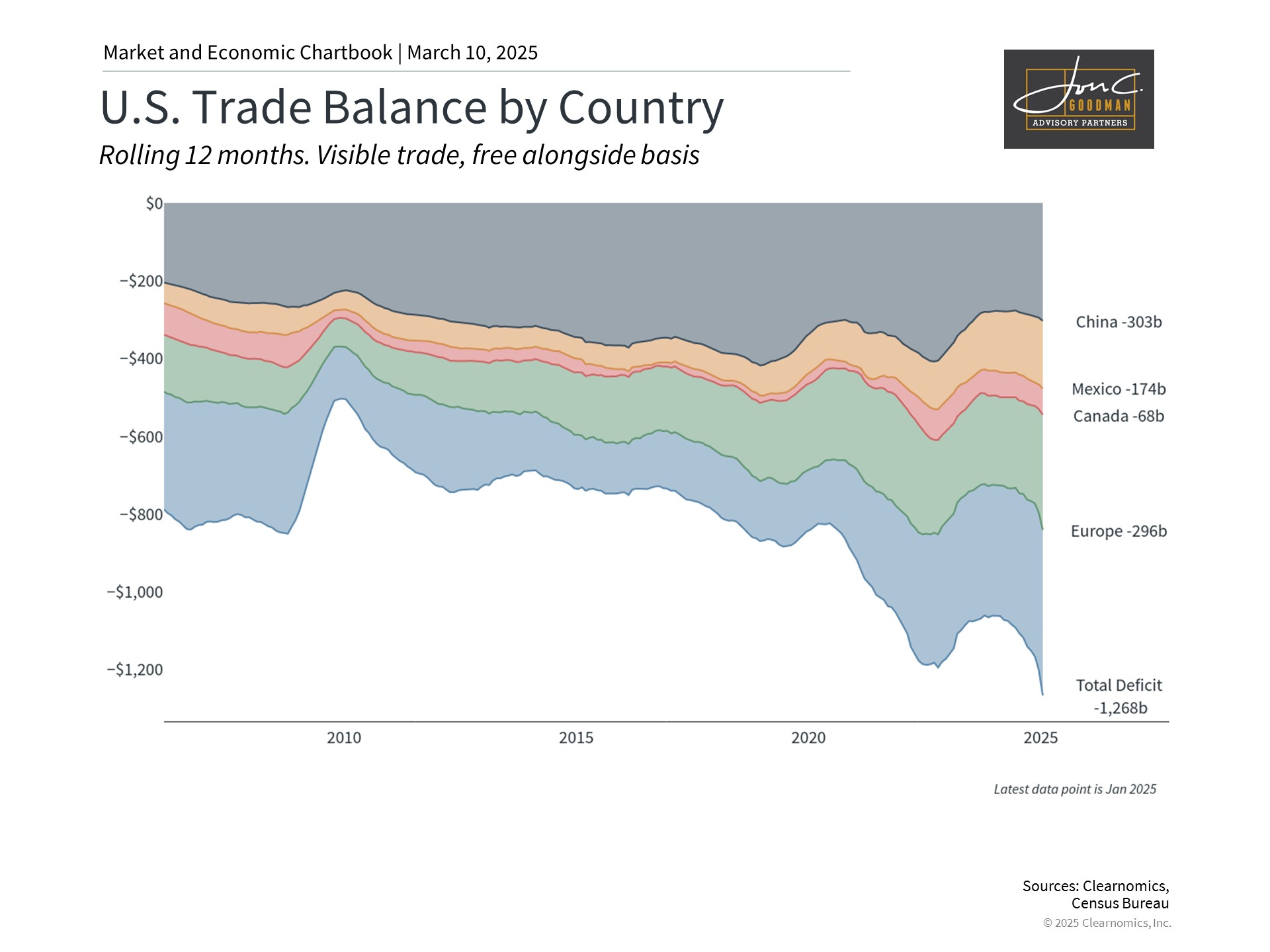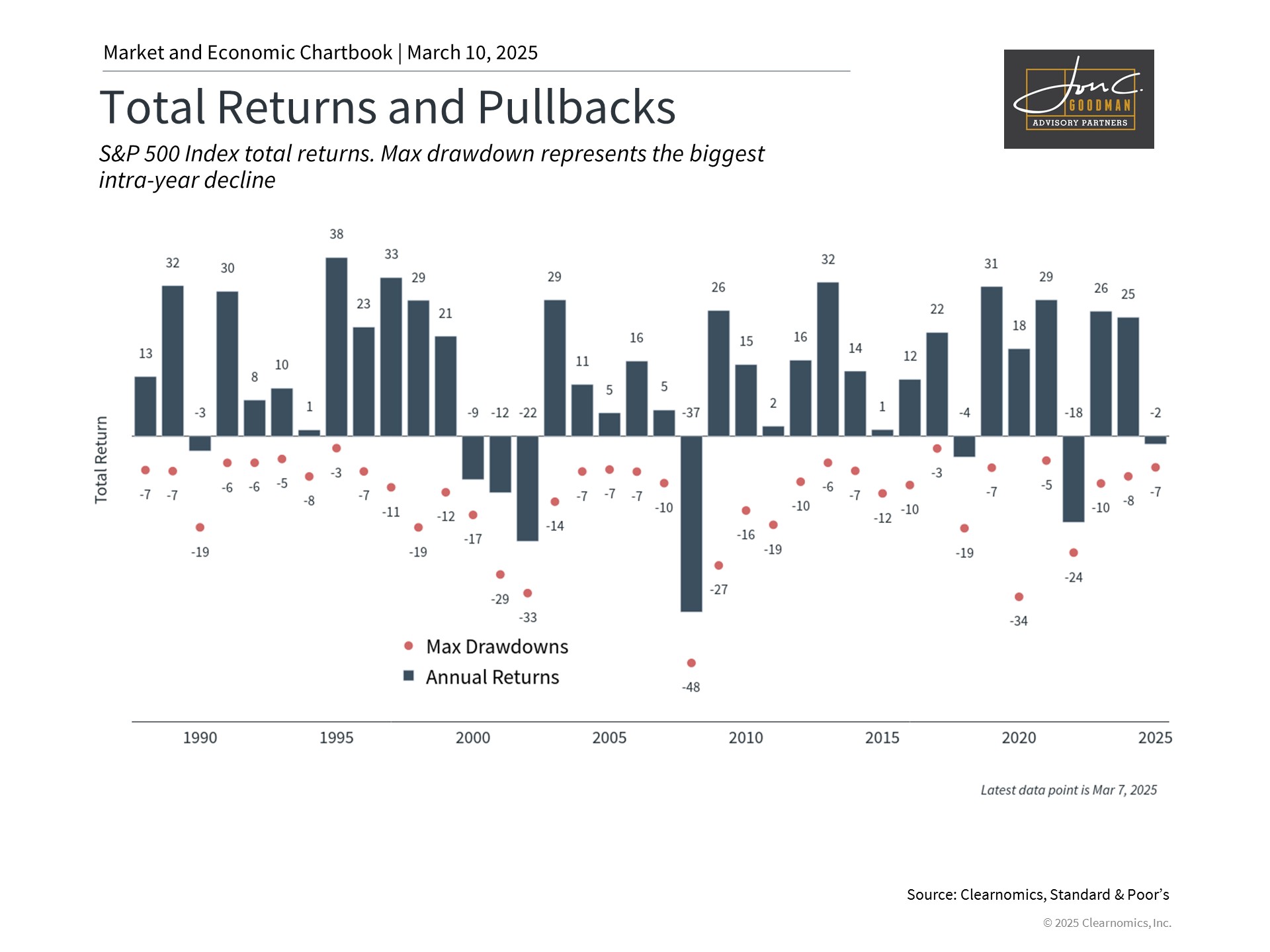Markets have experienced renewed volatility as President Trump implements fresh tariffs affecting Canada, Mexico, and China. The administration’s decision to move forward with these trade measures, rather than extending deadlines or negotiating alternatives, has created uncertainty. Additionally, there are signals that more tariffs could be implemented, including retaliatory measures against nations that levy duties on American products.
These trade developments have triggered market concerns about potential economic impacts, particularly regarding consumer prices and business costs. This uncertainty has led to broad market declines across various sectors.
Understanding the market impact of trade policy.

During periods of market volatility, the value of thoughtfully constructed investment portfolios becomes particularly evident. Similar to the market reactions seen during trade tensions in 2017 and 2018, investors have remained cautious since the recent presidential inauguration. However, historical patterns demonstrate markets’ resilience in overcoming such challenges over time.
The primary concern surrounding tariffs stems from their nature as import taxes that typically result in higher costs for consumers. Given the current elevated inflation environment, additional tariffs could further impact consumer prices. This situation becomes more complex when trading partners implement reciprocal measures, potentially leading to an expanding trade conflict. The chart illustrates America’s substantial trade imbalances with key international partners.
Context is crucial when evaluating current trade measures. Historically, the United States has employed tariffs since its early industrial development, reaching peak usage during the 1930s. These measures often serve to protect strategic domestic industries, particularly in sensitive areas like technology and national defense.
The previous implementation of tariffs during Trump’s first term ultimately resulted in new trade agreements with several nations, including Mexico and China. The administration frequently uses tariffs as leverage to achieve broader policy objectives, including addressing immigration concerns and drug trafficking.
Market responses to tariff announcements typically exceed their actual economic effects, especially when such measures are temporary or lead to negotiated solutions. Despite trade-related market volatility from 2017 to 2019, overall market performance remained strong during this period.
While current trade tensions present unique characteristics, they serve as a reminder that market concerns don’t always materialize into significant economic impacts.
Market corrections are an inherent part of the investment landscape.

The S&P 500’s recent 5% decline, while noteworthy, represents a relatively common market occurrence. Similar or larger pullbacks happened twice in 2024, three times in 2023, and multiple times during the 2022 bear market.
Following recent record highs, some investors may have forgotten that markets move in both directions. While year-to-date performance has disappointed some who anticipated strong growth, numerous positive economic indicators remain intact.
Recent corporate earnings have shown robust growth. The unemployment rate remains low at 4.0%, wage growth continues, and productivity maintains steady improvement. High yield bond spreads staying below pre-pandemic levels suggests fixed income investors maintain optimism about economic prospects.
Long-term investment success requires patience through market fluctuations.
Despite technology sector challenges, other market segments have demonstrated strength in recent months. Various asset classes and geographic regions have performed well, highlighting diversification benefits. Fixed income investments have appreciated as yields declined, helping to balance portfolio returns during market stress.
Historical evidence supports maintaining a long-term investment approach during market volatility. While short-term fluctuations can be concerning, consistent market participation typically rewards investors through compounded returns over time.
Although trade-related headlines will likely continue generating market reactions, successful investing requires a broader temporal perspective. The focus should remain on building and maintaining well-structured portfolios aligned with long-term financial objectives.
The bottom line? Recent trade policy developments have contributed to market volatility and sector rotation. Historical evidence suggests maintaining strategic long-term investment positions, rather than reacting to short-term fluctuations, typically leads to better outcomes.
